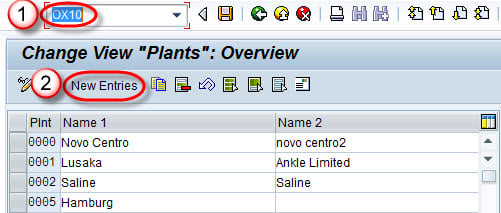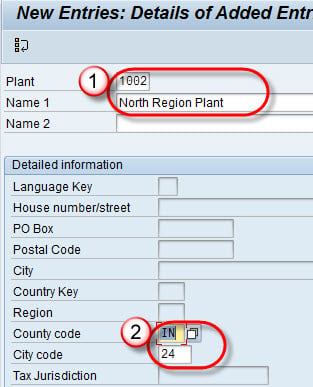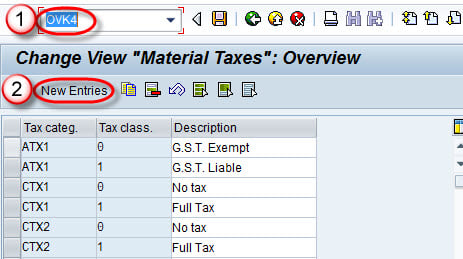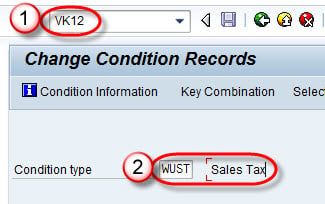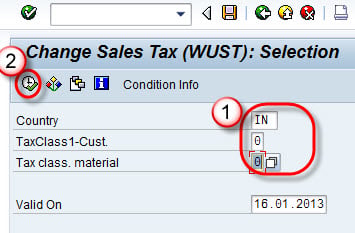SAP SD Tax Determination Procedure Tutorial: VK12, OX10, OVK4, OVK1
SAP uses Condition Method technique to calculate taxes (except Withholding Tax) in the system. Tax Calculation Procedures (defined in the system) together with the Tax Codes are used in calculating the amount of tax.
The Tax Code is the first step in the tax calculation procedure. The Tax code describes following –
- Tax type (Tax Type can be defined by T-code –OVK1).
- Amount of tax calculated / entered.
- GL account for tax posting.
- Calculation of additional tax.
Each country has a specific Tax Procedure defined in the standard system. A Tax calculation procedure contains the following fields:
- Steps — It determine the sequence of lines within the procedure.
- Condition Types — Indicates how the tax calculation model will work (whether the records are for fixed amount or percentages and whether the records can be processed automatically.)
- Reference Step s— System obtains the amount/value it uses in its calculation (e.g. the base amount).
- Account/Process Keys— Provide the link between the tax procedure and the GL accounts to which tax data is to be posted. This helps in automatic tax account assignments. To enable this automatic assignment, there is a need to define the following:
- Posting keys (unless there is a specific requirement, it will be sufficient to use the GL posting keys: Debit: 40, Credit: 50).
- Rules to determine on which fields the account determination is to be based (such as the tax code or country key).
Step 1) Tax Category
Tax Category is used to group and manage similar product tax rates or service tax rates. Tax Rates are defined for each of the tax codes. The tax rates are linked to Tax Types and are included in the tax procedures (in this relationship, it is technically possible that a single tax code can have multiple tax rates for various tax types.) The tax code is assigned to a Tax Procedure, which attaches to a GL master record. A specific tax procedure is accessed whenever that GL account is used in document processing.
Step 1.1)
- Enter T-code OVK3 in the command field .
- Click on New Entries Button.
Step 1.2)
- Enter Tax Categories ,Tax class and description.
- Click on save button.
A Message “Data was saved ” is displayed.
Step 2) Define Tax Types
Step 2.1)
- Enter T-code – OVK1 in the command field.
- Click on new entries button.
Step 2.2) Enter Tax country / Sequence / tax category and save the data .
Step 3) Assign the plant for Tax Determination
Step 3.1)
- Enter T-code OX10 in the command field.
- Click on New entries Button.
Step 3.2)
- Enter Plant / Name1.
- Enter country code / city code.
Save the data.
Step 4) Define the Material Taxes.
- Enter T-code OVK4 in the command field.
- Click on New Entries Button.
Step 4.1)
- Enter Tax category / Tax classification and description.
- Save the data.
Step 5) Define the Tax Determination
Step 5.1)
- Enter T-code VK12 in the command field.
- Enter condition type .
Step 5.2) Select Domestic taxes.
Step 5.3)
- Enter Country / customer tax class / material tax class.
- Run the report.
Step 5.4) Enter Customer Tax class/Material Tax class / amount / validity period and tax code.
Save the record.





